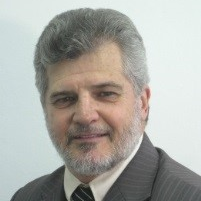Frontiers in Power Electronic Converters for Photovoltaic Applications
A special issue of Energies (ISSN 1996-1073). This special issue belongs to the section "A: Sustainable Energy".
Deadline for manuscript submissions: closed (31 August 2022) | Viewed by 4115
Special Issue Editors
Interests: grid-connected photovoltaic inverters; high-gain DC–DC converter; stability analysis in power electronics level
Interests: DC–DC and DC–AC converters; grid-connected photovoltaic inverters; high-gain DC–DC converters
Special Issues, Collections and Topics in MDPI journals
Special Issue Information
Dear Colleagues,
The electric power generation system is modernizing by moving away from conventional centralized power plants toward distributed generation units, in which grid-connected photovoltaic systems play an important role. This scenario was only made possible due to advances in several areas, including a decrease in cost and increase in the efficiency of photovoltaic cells, evolution of politics aiming at the reduction of greenhouse gas emissions, availability of microprocessors with greater computational capacity, development of faster communication protocols, and increase in reliability performance and reduction in lifetime maintenance cost of PV converters. Although power electronics applied to photovoltaic energy processing has reached a maturity stage, it continues to develop, providing solutions to the new challenges that arise as photovoltaic systems are disseminated by the electrical power system. This Special Issue is dedicated to attracting the latest results in high-performance power electronics converter topologies, modulation schemes, and control strategies for photovoltaic applications. Researchers are invited to present cutting-edge ideas to extend the state of the art related to the frontiers of power electronics for photovoltaic applications. Full papers and reviews are all welcome.
Prof. Dr. Roberto Francisco Coelho
Prof. Dr. Denizar Cruz Martins
Prof. Dr. Lenon Schmitz
Guest Editors
Manuscript Submission Information
Manuscripts should be submitted online at www.mdpi.com by registering and logging in to this website. Once you are registered, click here to go to the submission form. Manuscripts can be submitted until the deadline. All submissions that pass pre-check are peer-reviewed. Accepted papers will be published continuously in the journal (as soon as accepted) and will be listed together on the special issue website. Research articles, review articles as well as short communications are invited. For planned papers, a title and short abstract (about 100 words) can be sent to the Editorial Office for announcement on this website.
Submitted manuscripts should not have been published previously, nor be under consideration for publication elsewhere (except conference proceedings papers). All manuscripts are thoroughly refereed through a single-blind peer-review process. A guide for authors and other relevant information for submission of manuscripts is available on the Instructions for Authors page. Energies is an international peer-reviewed open access semimonthly journal published by MDPI.
Please visit the Instructions for Authors page before submitting a manuscript. The Article Processing Charge (APC) for publication in this open access journal is 2600 CHF (Swiss Francs). Submitted papers should be well formatted and use good English. Authors may use MDPI's English editing service prior to publication or during author revisions.
Keywords
- Bidirectional converters for integration of energy storage elements in grid-connected photovoltaic systems
- Control techniques for photovoltaic inverters providing ancillary services to the grid
- New generation of central inverters, string inverters, microinverters (or AC modules), and DC optimizers
- Decoupling techniques for mitigating the circulation of common mode current in photovoltaic inverters
- Fast maximum power point tracking (MPPT) algorithms for photovoltaic inverters
- Filters with a high attenuation factor for grid-connected photovoltaic systems
- Low-voltage ride through (LVRT) schemes for photovoltaic inverters
- Modeling and control of grid-connected photovoltaic inverters
- Partial power processing applied to photovoltaic systems
- Power converters for photovoltaic applications
- Stability analysis of multiconverter photovoltaic systems
- Techniques for suppression of the double-line frequency oscillation in the single-phase photovoltaic inverters
- Virtual synchronous machine (VSM)







